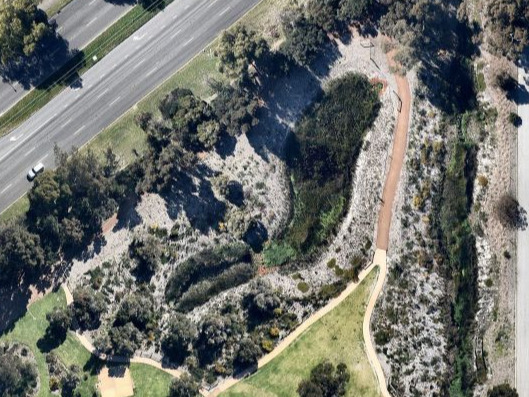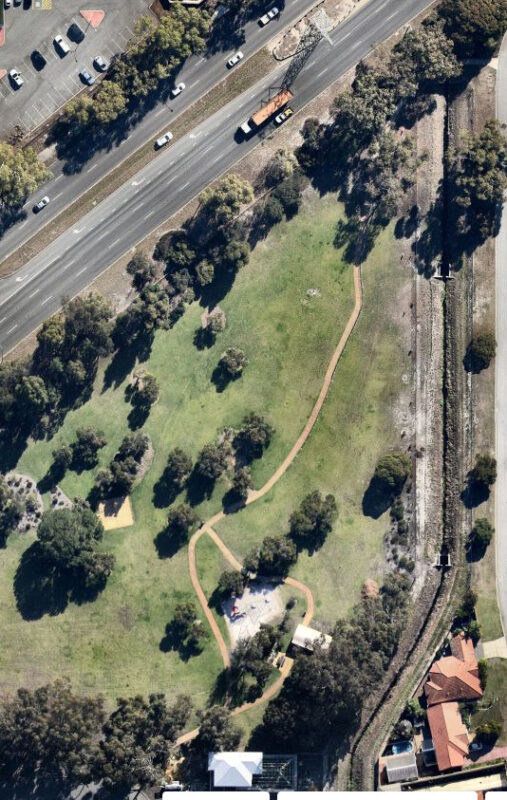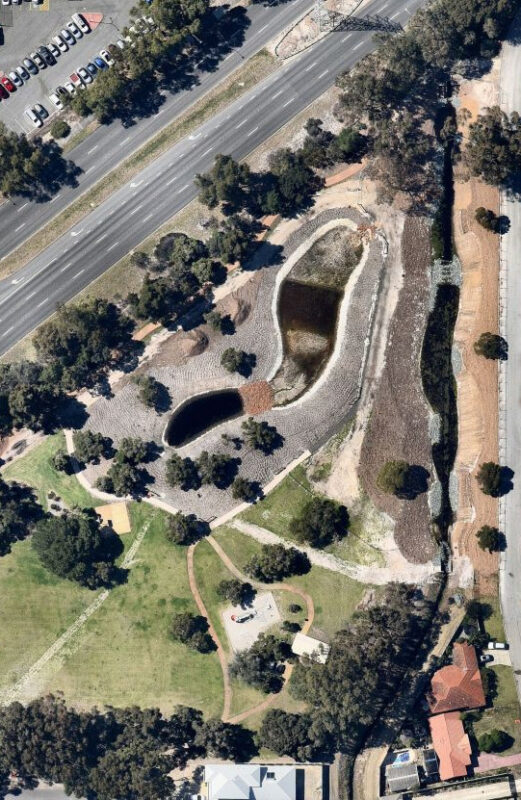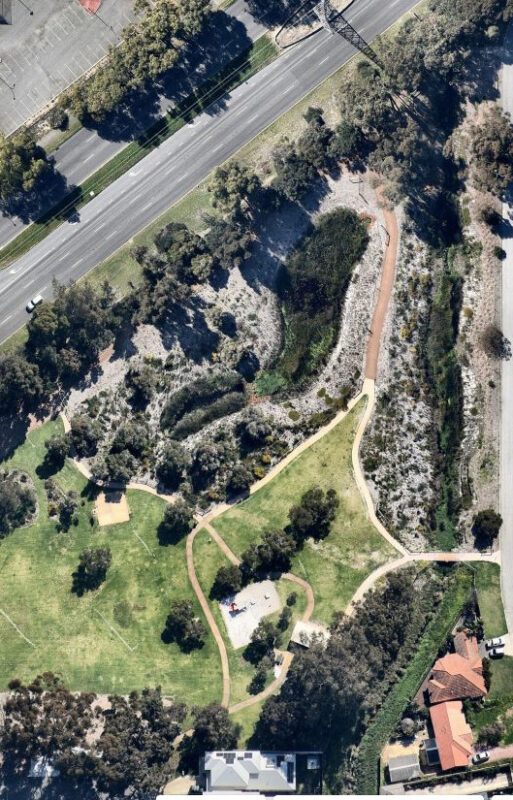Perth NRM’s environment team supports action that improves the integrity of the Swan and Canning River systems.
The main focus has been eradicating the Water Pennywort (Hydrocotyle) plant and other weed management, and other actions to improve the ‘Middle Canning’ section of river (from Booragoon to Cannington), its connecting smaller rivers and streams (tributaries) and associated wetlands.
The adaption of an existing open drain into a ‘living stream’ and the installation of a constructed wetland at Nurdi Park in Riverton is one such project. Starting in 2020, in collaboration with South East Regional Centre for Urban Landcare (SERCUL), City of Canning, Department of Biodiversity, Conservation and Attractions (DBCA), and the Water Corporation, the drain has undergone significant modification through earthworks, weeding, planting and the installation of rock riffles to mimic a natural wetland filtration system.
This system was designed to capture a portion of the existing drain’s water flow and divert it into the constructed wetland where it interacts with several carefully engineered features. The first basin of the constructed wetland is designed to slow the flow, allowing sediment and larger particles to drop out of the water column. It is then encouraged to seep through a shallower section of partly submerged rocks (a riffle) where the upper levels of water are oxygenated before entering a second basin. This basin is designed to allow plants to grow and naturally strip nutrients and other pollutants out of the water.
The water then returns to the drain, which then flows into the river. The original drain was also modified to mimic a natural stream – the straight banks were reshaped to curve and meander, other riffles were installed to aid oxygenation, and the steep edges softened and sloped to encourage plants to interact with the water. All of these modifications help to control the water flow and manage potential erosion.
Since the modifications were completed, the University of Western Australia has been undertaking monitoring and research to understand how well these constructed wetlands perform.
This work is important because wetlands form an important habitat for a large diversity of fauna and flora species. Their capacity to hold large amounts of water is also invaluable for helping to prevent flooding during heavy rains, and they provide refuges from the urban heat for humans and are often culturally significant for local Aboriginal groups. To learn more about the importance of wetlands, read this article.
Progress images of Nurdi Park
- Nurdi Park – May 2020 – before development
- Nurdi Park – Nov 2020 – during development
- Nurdi Park – August 2022 – after development
The redevelopment of the open drain
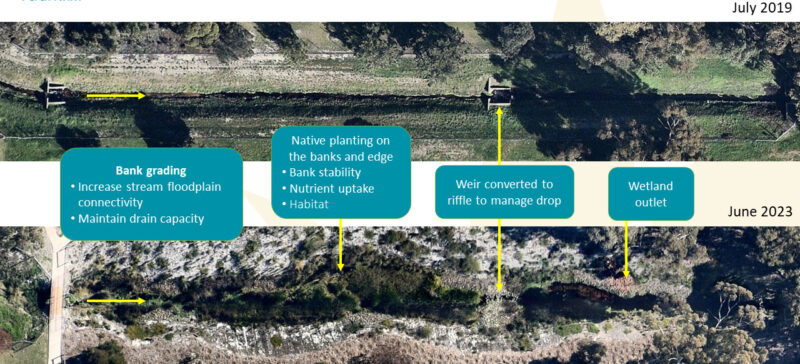
The open drain of Nurdi Park has been reworked to more closely replicate a natural stream, with more plants, rocks and a winding bank to help filter the waterflow.
Creation of two wetland basins
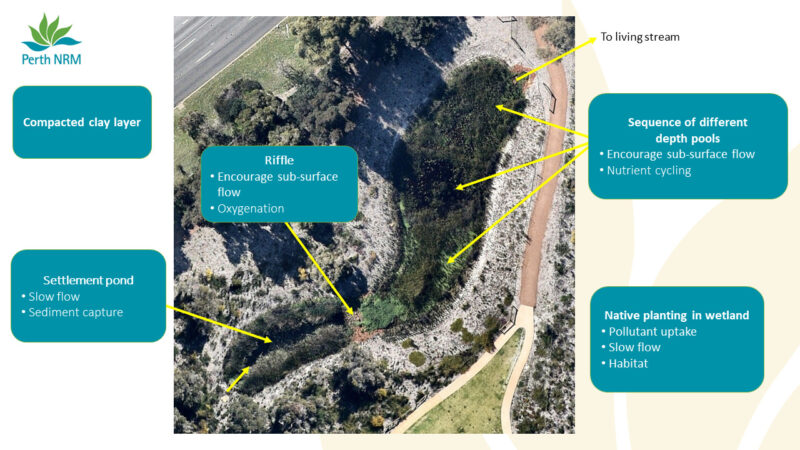
The new Nurdi Park wetland basins are connected by shallow rocks and surrounded by plants to help filter the water before it reconnects with the drain.
This project is supported by Perth NRM through funding from the Australian Government.
Partners
We acknowledge and appreciate the support of all our partners, supporters, funding bodies and sponsors.

